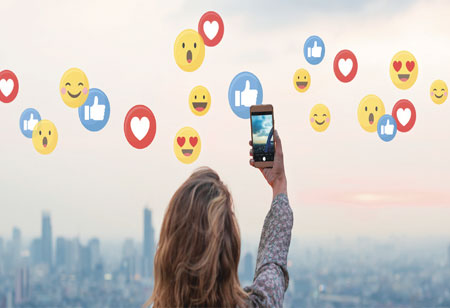
Influencer Marketing: Every Brand's 'Must Have' Marketing Strategy


CEO Insights Team, 0
Today brands use such influencers to promote their offerings, though one thing remains common among their brand persona they relate to. Once a rarely populated segment, today social media influencers have almost saturated the market and some even got caught up in fraud. Despite all these, today influencer marketing is driving the communication strategy for many brands. This is why the global influencer marketing platform is valued to be around $24.1 billion by 2025, growing at a CAGR of 32 percent.
However today influencer marketing strategies are more difficult to navigate than ever before for any brand. This is because of the increasing use of smartphones among common people and them being aware of the power social media holds. Hence we find influencers from quite a young age to even old people who hold strong following among masses. Some brands as big as PepsiCo, Amazon and Biba have roped in nano influencers to scale up their brand engage ment. Such engagement becomes more power packed during the festive times.
According to a survey 89percent said that RoI from influencer marketing is comparable to or better than other channels. Some even said that influencer marketing deliver nearly 11 fold higher RoI. The pandemic played a crucial role in empowering influencer marketing. As more and more people consumed increasing and different content online and on different OTT platforms, this proved as a fertile ground for nano influencers to create a niche for themselves in their area.
While in the past, influencers and/or bloggers were restricted to mostly women focusing on fashion and lifestyle, this increasing digital penetration helped influencer marketing to leap frogged to different categories of content targeting a wide variety of customer base. Today influencer marketing offers deeper engagement and organic growth for brands. However, is influencer marketing worth all the hype? According to a survey 89 percent said that RoI from influencer marketing is comparable to or better than other channels. Some even said that influencer marketing deliver nearly 11 fold higher RoI.
However, this return depends not just on the number of followers an influencer has but on the kind of engagement she has with her/his followers. On the other hand, the increasing time spent on internet has enforced brands to engage with content creators and influencers on platforms such as Facebook, Instagram, YouTube, Pinterest and others. This is because influencers have become opinion makers who can slip a brand into a consumer's consideration set, resulting in gradual increase in the share of influencer marketing within their digital ad spends.
However, one of the biggest challenges for brands is the fake followers some influencers have. Organi zations are competing with each other to engage with authentic and effective influencers. This growing competition has increased the demand for micro and macro influencers. But this growing demand has made it difficult for brands to identify authentic influencers with a large number of followers. Today, many influencers use fake followers through bots to show their popularity and attract big brands. According to Mediakix's survey, an influencer marketing agency, big brands have come across 50 percent of influencers with fake followers. Another survey by Sway Ops an antifraud company, reveals that one day's Instagram posts had 50 percent fake followers.
Surprisingly, yet another survey by White Ops/ANA revealed that the global losses due to bot frauds were estimated to be $7.2 billion in 2016. Hence organizations are adopting auditing tools to identify fake accounts by scanning influencers' account and show the data of authentic and fake followers.
Indeed these steps will help brands spend on authentic marketing influencers and gain more profit in terms of brand presence, brand loyalty and RoI.
According to a survey 89 percent said that ROI from influencer marketing is comparable to or better than other channels
However, this return depends not just on the number of followers an influencer has but on the kind of engagement she has with her/his followers. On the other hand, the increasing time spent on internet has enforced brands to engage with content creators and influencers on platforms such as Facebook, Instagram, YouTube, Pinterest and others. This is because influencers have become opinion makers who can slip a brand into a consumer's consideration set, resulting in gradual increase in the share of influencer marketing within their digital ad spends.
However, one of the biggest challenges for brands is the fake followers some influencers have. Organi zations are competing with each other to engage with authentic and effective influencers. This growing competition has increased the demand for micro and macro influencers. But this growing demand has made it difficult for brands to identify authentic influencers with a large number of followers. Today, many influencers use fake followers through bots to show their popularity and attract big brands. According to Mediakix's survey, an influencer marketing agency, big brands have come across 50 percent of influencers with fake followers. Another survey by Sway Ops an antifraud company, reveals that one day's Instagram posts had 50 percent fake followers.
Surprisingly, yet another survey by White Ops/ANA revealed that the global losses due to bot frauds were estimated to be $7.2 billion in 2016. Hence organizations are adopting auditing tools to identify fake accounts by scanning influencers' account and show the data of authentic and fake followers.
Indeed these steps will help brands spend on authentic marketing influencers and gain more profit in terms of brand presence, brand loyalty and RoI.